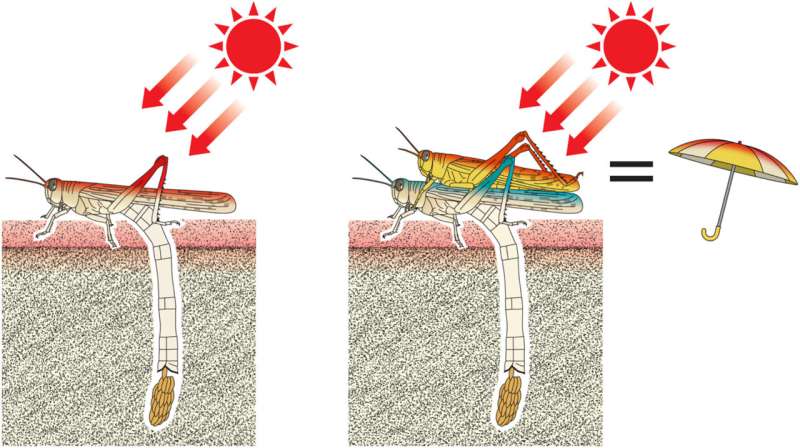Researchers have discovered that male desert locusts will mount female locusts during the hottest part of the day to provide them with shade and protection while they lay their eggs. This behavior helps the females withstand the intense desert heat, enabling them to reproduce even in the most extreme conditions. The findings could lead to new strategies for combating locust infestations and preventing crop devastation. Desert locusts are known for their ability to quickly decimate large areas of agriculture, making this discovery an important step in understanding their reproductive habits and developing effective pest control methods.

Shading Females During Egg Laying
A team of entomologists from the Center National de Lutte Antiacridienne’s Mauritanian National Desert Locust Center has made a fascinating discovery about the behavior of male desert locusts. During the hottest parts of the day, the researchers observed that male locusts will mount females as they are laying their eggs, effectively shielding the females from the scorching desert sun.
The researchers conducted field expeditions and experiments to study this phenomenon. They found that when the desert floor reached temperatures up to 48°C (118°F), approximately 90% of the females were being ‘parasol-ed’ by males. The paired locusts moved in tandem, staying parallel to the sun’s rays, ensuring the females remained in the shade. Thermal imaging revealed that the females’ bodies were significantly cooler when being shaded by the males.
Protecting Eggs from the Heat
Prior research has shown that female locusts typically lay their eggs in the cooler evening hours, but some have been observed doing so during the day. The researchers wondered how the females could survive the extreme heat while in the vulnerable egg-laying process.
To test their theory, the researchers conducted a simple experiment. They glued dead locusts to sticks and tied them to the ground, some in pairs and some alone. By monitoring the body temperature of the dead locusts, they found that those in pairs served as a shield against the sun’s heat, with the bodies underneath being significantly cooler. This suggests that the male locusts’ behavior of mounting the females during egg laying helps protect the eggs from the punishing desert temperatures.
Implications for Locust Pest Control Strategies
The researchers believe their findings could lead to the development of new pesticide strategies to combat locust infestations and prevent the devastating loss of crops. By better understanding the reproductive habits of desert locusts, including their unique mating and egg-laying behaviors, pest control experts may be able to devise more targeted and effective methods to disrupt their life cycle.
This discovery also highlights the remarkable adaptations that desert locusts have evolved to thrive in the harshest of environments. Their ability to reproduce even during the hottest parts of the day, with the help of male ‘parasols,’ is a testament to the resilience of these insects. As we continue to explore the complex behaviors of locusts and other pests, we may uncover more insights that can help us protect our agricultural systems from their devastating impacts.
